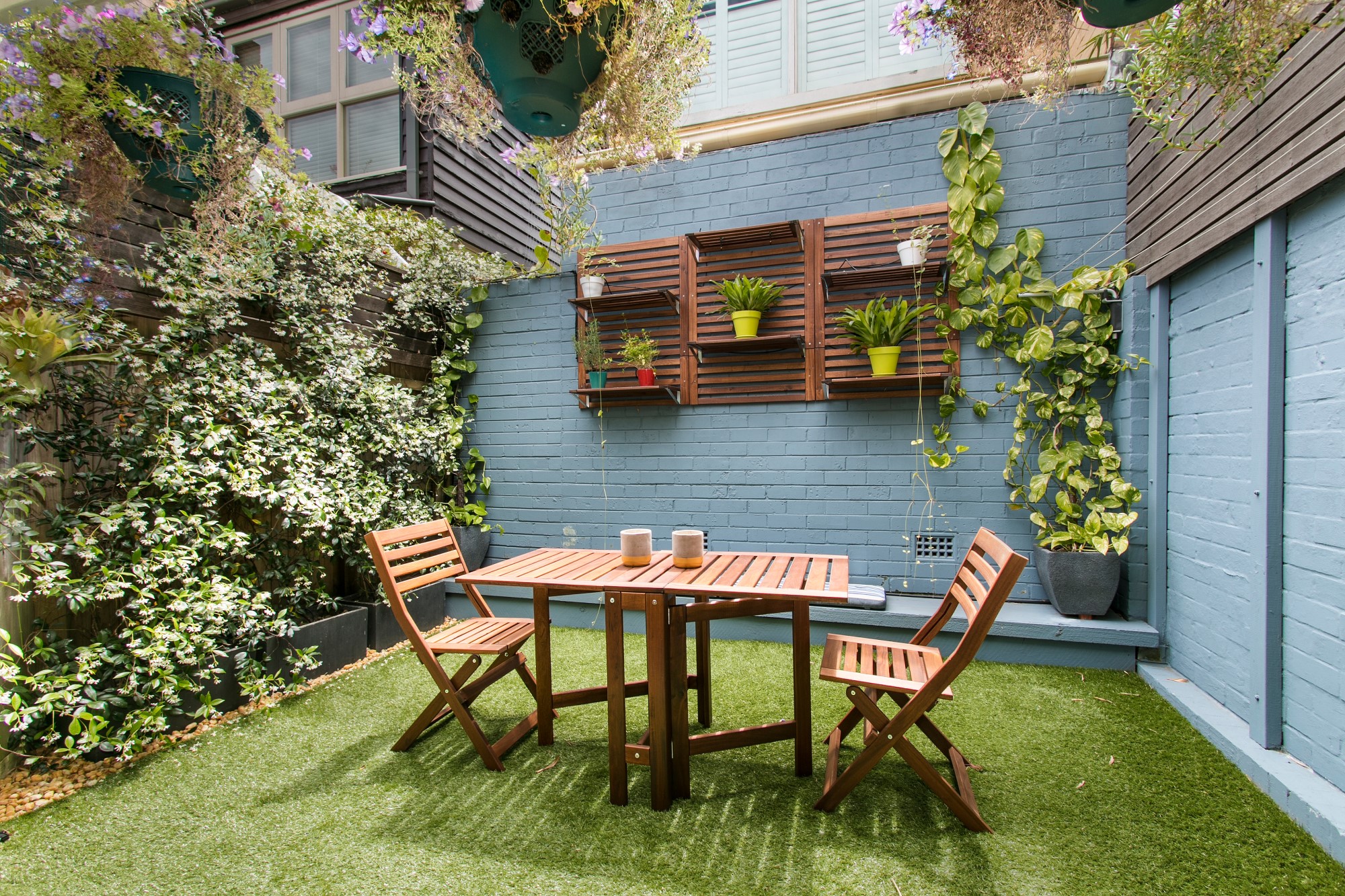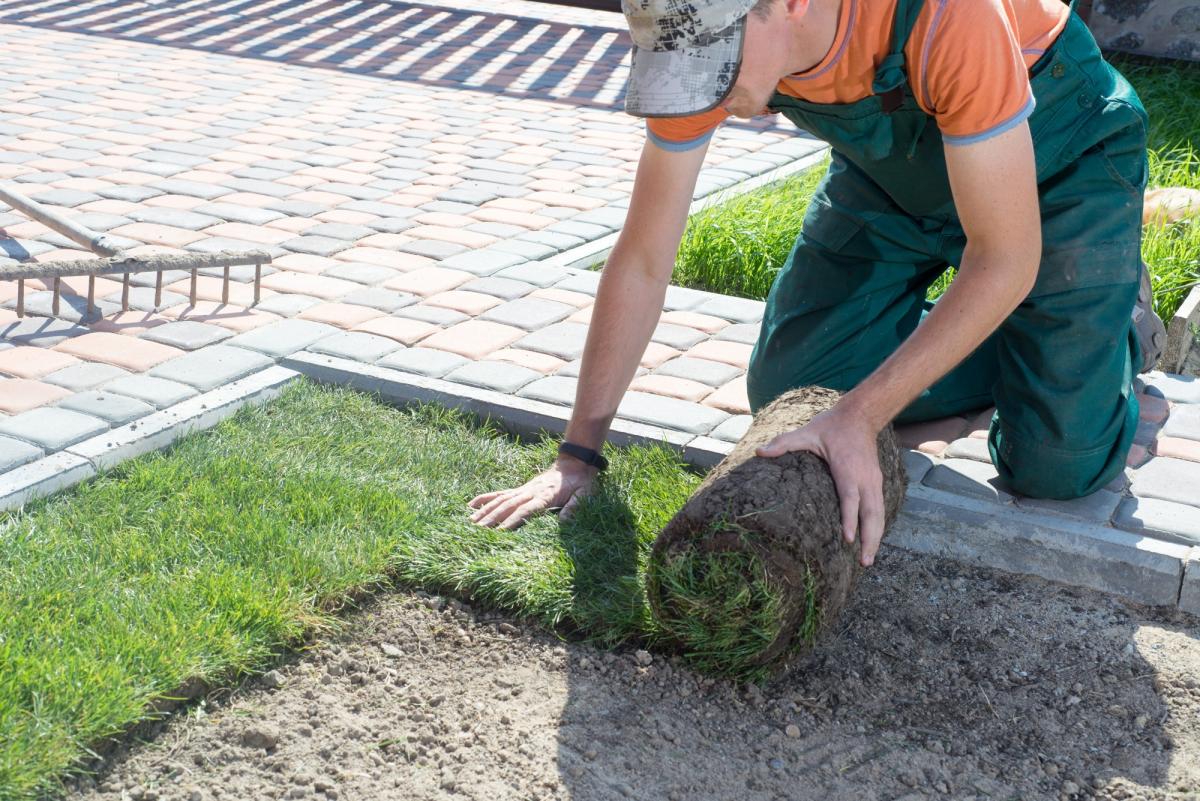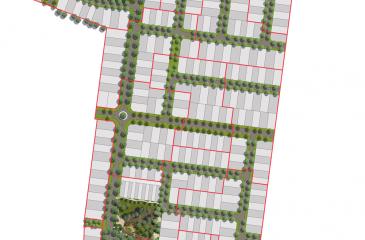TURF’S UP!

How to grow lawn that will make your neighbours green with envy.
So you’ve finally moved into your new house! But to really complete your dream home, it’s time to tackle the garden! The first step? Creating the perfect lawn. And while you might think it’s as simple as sprinkling some grass seed out and hoping for the best, a little bit of planning up front will pay dividends and deliver you with an outcome that is sure to be the envy of all your neighbours.
To help you, here are some handy hints for establishing and maintaining a healthy lawn from the experts at Dennis Family Corporation.
Start with the right soil profile.
The best foundation for a healthy lawn is the right soil. Ideally, this will be made up of a neutral sandy loam or top soil which will hold moisture, but also drain well when you water the lawn. Plus it will retain nutrients and allow air flow, giving your lawn the best chance to get established.
Make sure you have plenty of drainage
Poor drainage will affect how your lawn looks and performs. Lawns that don’t drain properly, quickly become waterlogged. The more waterlogged it becomes, the less oxygen is present in the soil, which means your lawn can’t breathe. So try and minimise any potential pooling areas where water can collect.
Clay is not your friend
Clay is evil stuff when trying to establish the perfect lawn, but it’s easily avoidable by excavating around 100mm of any existing clay from the top of your lawn area and installing a drainage system beneath the turf.
Don't get too shady.
While we all love a bit of outdoor shade, it’s important to think about where you plant trees relative to your lawn when designing your garden. The basic rule of thumb? Don't plant your lawn in areas that are likely to be over-shady – now or in the future, as more shade means less sun, inhibiting photosynthesis and stopping it from growing!
What to plant?
It takes a versatile plant to be able to withstand the full gamut of Australian weather conditions. Depending on where you live, some grasses will cope better than others. Cool season grasses like Fescues, Kentucky Bluegrass and Rye Grasses are best suited to colder conditions, and their peak growing period is in early spring, when the soil is still cool. They provide a good option for homeowners in frost-prone areas. Rye Grasses also grow happily in shade – a huge bonus for yards that are enclosed.
Warm season grasses like Couch and Kikuyu much prefer heat over cold, withstanding Australia’s baking sun admirably. They are generally more drought resistant, and have their peak growing period in early autumn, when the soil is still warm. On the flip-side, they aren’t great at tolerating frost, and can brown off when conditions get chilly. If you’re in an area prone to icy mornings, a warm season option may not be for you.
For anywhere with varied weather, a seed blend may offer the best lawn solution. Blends use a combination of seeds to ensure that grass grows in all conditions, as one variety will cover for the weaknesses of the other – which is a great way to ensure that your lawn stays green all year round.

Make lawn while the sun shines.
While it’s not always possible, grass seed is best sown in mid-autumn, when there is less competition from weeds, and the soil is warm, and damp from rain – perfect for seeds to germinate. If you miss the opportunity to sow in autumn, try in mid-spring, but only if you can give new grass plenty of water.
Let your lawn breath.
Lawns need renovating at least once a year to aerate the roots, and the process used depends on the turf you have. For example some turf species benefit from coring or plugging or you can spike your lawn.
Feed your lawn.
It’s important to fertilise your lawn at least once or twice a year with a mix of nitrogen, phosphorus and potassium. So ask your local nursery about the right balance of these for your particular turf species. Slow-release granular or liquid fertilisers are generally the most effective options.
The War on Weeds
Keeping weeds under control is easy with the correct selective herbicides which you can obtain from any nursery. Or if you want to take an organic approach, spray salt water on weeds or get rid of them the old fashion way by digging them out.
Get a good mower.
It’s worth investing in a good quality lawn mower that you can easily transport. If budget is an issue, look on Gumtree, check out local council clearing sales for a good second hand model or join with a few neighbours and buy one together.
Most importantly of all, don't over water in the first three weeks, don't cut new grass and keep foot traffic to a minimum – and you’ll be well on way to having a lawn to be proud of!
Related News

Here’s where our team are key! Cheryl and Vesna are our property experts, with years of...

With favourable weather conditions over winter and a busy team, civil works within Stages 1, 2...

With your land now selected, it’s time to choose a home design and builder. Before you start...

